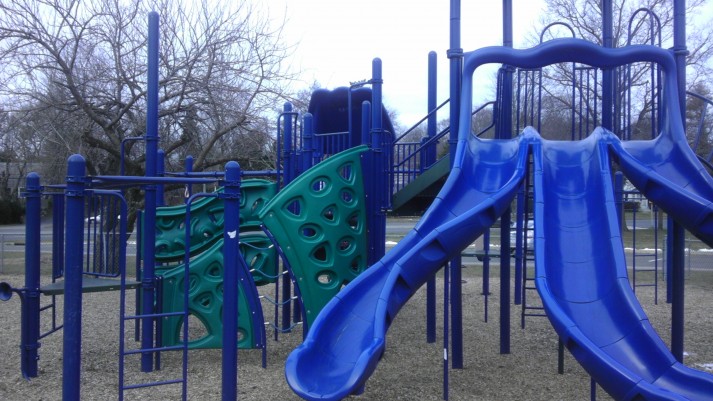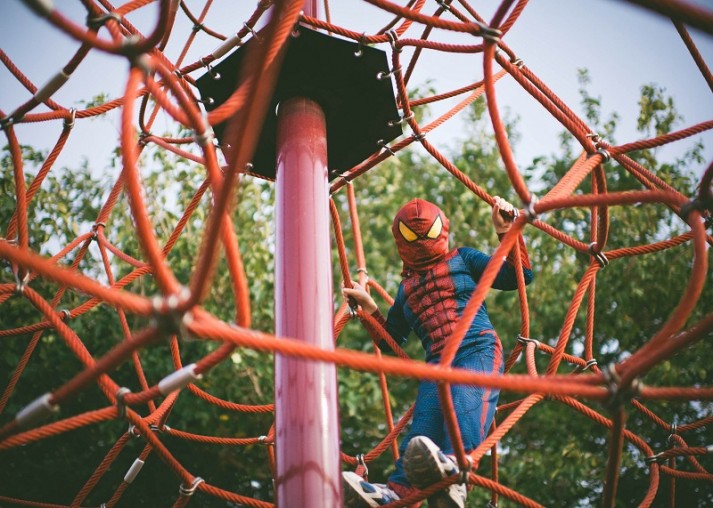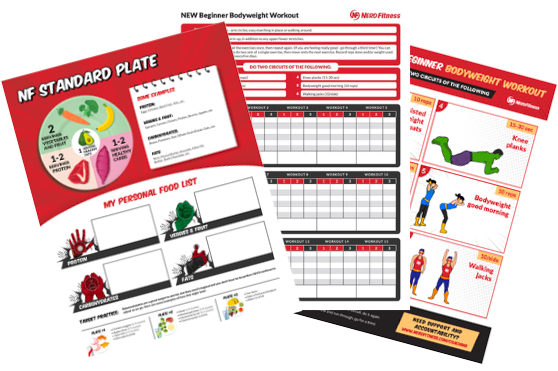
This is a guest post from Khaled Allen.
Imagine that you are Spider-Man.
You’re reading Nerd Fitness, so I’m guessing this isn’t too much of a challenge.
What’s the first thing you would do with your new powers? Probably something like webslinging around your city, scaling the side of a building, and hanging upside down just for the hell of it, right?
You’re not alone: after all, it’s these scenes in the Spider-Man movies that are always the most exhilarating.
We want to BE Spider-Man in those moments, playfully exploring new powers, free of danger and full of creativity. Essentially, it’s like a kid on Christmas morning.
Wouldn’t it be great if workouts could feel like that (and not something that you have to suffer through)?
Spider-Man’s big appeal is that he’s playful. He seems to genuinely enjoy climbing walls, swinging from skyscrapers, and popping flips around the bad guys. He even cracks jokes in the middle of fights. Spider-Man is having fun, and this playfulness characterizes the way he moves, fights, and trains.
I’m here to tell you that you can use play to explore your abilities in ways more creative and empowering than the limited, controlled movements of a standard workout. It’s okay to act like a kid, and it can be incredibly beneficial!
Let’s learn how.
Benefits of Play

Play workouts (or playouts) have a number of benefits over traditional workouts.
- First and most importantly, a playout isn’t about building muscle, losing weight, or perfecting a routine – A playout is about figuring out the best way to interact with the environment in order to meet your goals. It shifts your focus from internal to external. It is about solving problems and having fun. Watch any video of Ido Portal (a real life Spider-Man?) and you’ll want to go outside and roll around.
- A playout integrates multiple movement patterns to overcome an obstacle – For example, Spider-Man’s web swing requires accurate aim, powerful jumping, swinging, and climbing. Excelling at these skills individually wouldn’t help, since Spider-Man needs to transition between them seamlessly to make the move work. In the gym you might train pullups and dips separately, but if you need to climb a tree, you’ll use both in sequence, as well as weird variations of each that blur the lines. This is the basis of Parkour.
- Playouts involve more exploration and improvisation than traditional workouts. There is no ‘right’ way to do anything when you’re playing. There are only more and less efficient ways. Which you choose will depend on your skill and level of fitness. If a regular workout is like building a model with instructions, playouts can be thought of as using a giant box of LEGOs: there will be many ways to build the same object, and your model’s complexity depends on how comfortable you are with the blocks.
Designing Your Perfect Playout

Having a good playout requires that we think differently about exercise. Remember, rule #9 of the Rebellion: We Question Everything.
http://www.youtube.com/watch?v=_KHy1BYjaP0
1. Find a play area
In his latest cinematic adventure, Peter Parker goes to a shipyard to play with his skateboard, but he co-opts the ramp and chains in the dry dock to start practicing his spidey swings. Nothing he interacts with in that scene was meant to be used for spidey training, but he thinks outside the box and finds his own challenges, seeing how far he can push his abilities.
The first step to a successful playout is to identify a problem you’d like to solve. This requires that you learn how to see situations creatively. The more varied the environment, the better, but you can get pretty creative with just a park bench if you know how to view it. Good places to start include:
- Playgrounds
- Parks with benches, rocks, and fences
- Skate parks
- Sculpture gardens
- The wilderness


2. Explore your options
Once Peter started playing with the shipyard chains, he spent some time figuring out different ways to interact with them. He climbed them but found that swinging worked better, and later discovered that he could swing from one to the other.
Once you have your problem, discover different with ways to interact with it. Start with the obvious, but don’t stop there. This is where you can get creative, be silly and try things that may not work.
Make an effort to try movements that are unusual or novel, or even unnecessarily elaborate
For example, dealing with a park bench, you could:
- Crawl over or under it (break it down further: bear crawl, military crawl, shrimp, crab walk)
- Jump over it
- Jump on top and down
- Dive and roll over
- Vault it
- Move it
- Simply go around it
- Climb the overhanging tree and swing over
You don’t have to be as acrobatic as these guys (must watch!), but every little bit counts!
3. Groove the individual movements
Spend 5-10 minutes with each element in your play area and work on your form.
Good form here means the move starts to feel more natural and less effortful.
Focus on efficiency and comfort, and figure out what feels best for you.
If you get bored, move on to another element. The goal is to maintain a high level of mental and emotional engagement, so you learn faster and stay alert, thus avoiding sloppiness and injury.
4. Start building movement combos
Once you have experimented with different ways to approach each segment of your play area, start putting them together and moving through the environment.
Start with two obstacles and one transition and go slowly, focusing on smoothness of execution. This can be as simple as crawling across a field to a bench, transitioning to your feet, and jumping onto the bench.
Once you have drilled that a few times, it will feel more natural and you’ll hesitate less. At this point, you can start adding additional pieces to the front or back of your combo.
- Try jumping off the bench
- Then add a roll to the landing
- Then try to smoothly transition to a sprint after the roll
If there are objects around, make them part of the game; do a relay with rocks or logs, carrying them through your course.
As you start to get a feel for the pattern, it will go faster naturally, so don’t rush. Conditioning will come after sufficient skill and strength for safety.
5. Check for mistakes
The first time the (soon to be) Amazing Spider-Man used his webslinger to make an escape, he ended up swinging right into a bus. Ow. Clearly, he needed to spend some time refining that move.
Here are some things to look out for that can alert you to the need to go back and refine your form:
- If you keep banging one spot of your body every time you do a move, make adjustments: check your posture, be sure you are staying tight, or slow it down or find a simpler variation.
- If a movement is generally jarring or jerks you around, refine your movement pattern until it feels smoother. Again, change the speed of the movement or try a variation. Look out for this on landings especially. Jarring is also an indicator of fatigue and might be a sign that it is time to wrap up your play session.
- If you find it difficult to maintain balance or stick your landings when you rush into an element of a playout, slow down on that segment and spend some more time drilling precision and balance. Fatigue also affects these abilities.
6. Make it social
No matter how much he practiced on his own, Spider-Man could never really develop the skill necessary to save New York until he went out and tested his powers with villains.
While I don’t suggest you go out and try to break up muggings, having a partner to challenge and encourage you can make a huge difference in your training, and play lends itself very well to social workouts.
There are some things you can do with a partner that you simply can’t do alone.
The options are endless, but here are some ideas to get you started:
- Toss sticks back and forth while running or balancing
- Have them throw (light) stuff at you while you go through your course
- Carry each other through the course
- Race each other
- Create cooperative rules: try running through the course with the rule that a move cannot be used more than once by either person
Make a game out of it. This is play, after all.
Tips and Tricks

The first time you to playout, it may be stilted and awkward.
It’s very hard to think outside the box we’ve become accustomed to. Most people stop playing long before they become adults; the wild, free creativity of youth gives way to organized sports as early as elementary school. You’ll probably get funny looks. That’s great. Embrace the weird!
Luckily, we can take some pointers from Peter Parker and inject the same sense of joyful exuberance Spider-Man brings to everything he does:
- Always warm up. Just because it’s play doesn’t mean it’s not intense, and varied movements can take you by surprise. You can warm up with low-intensity play, like crawling, low walking, and balancing.
- Give yourself plenty of time. Play is creative and suffers under pressure, just like any other creative endeavor. If you feel even a little rushed, you will default to movements you are familiar with in an attempt to get through the challenge as quickly as possible.
- Repetition will help you see more options. You will actually get more creative with successive iterations. Let a problem stew for a few days, and revisit the same play area more than once, so that you can elaborate upon your previous movements.
- Don’t try to get a workout. If you approach play with the intention of conditioning, you may unconsciously restrict yourself to movements you associate with traditional workouts. Don’t worry so much about whether a movement is good exercise or if you know the ‘right’ way to deal with something.
Everyday spidey play

When you’re training to be a superhero, there are no off days.
Spider-Man knew this, but he also genuinely had fun with his powers, like doing his homework hanging upside down in his room.
In the same way, you can use the mindset of playfulness to add some extra movement and practice into your everyday life, and more movement is always a good thing. With a bit of creativity, you don’t even have to go out of your way.
- Walking down the street, try balancing on curbs or precision jumps between paving tiles.
- While waiting for a bus, practice single-leg balancing.
- Use squats to get stuff out of your refrigerator.
- Jump and down stairs, challenging yourself to cover more steps.
The more options you can see, the more freedom you have. Fighting crime is serious business, but even superheroes should get to enjoy their powers every now and then…without worrying about the fate of the world.
So try adding a playout or two to your weekly routine in between strength training or running.
Where do you plan to try your first playout?
Khaled teaches MovNat in Boulder, CO, and writes about living with integrity, embodying
###
photo source: spider-man job, mosiac, kids, jungle gym


